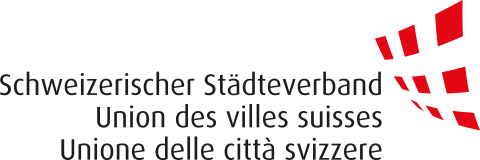FAQ zur neuen OKS-Richtlinie 2024
Warum gibt es unterschiedliche Anforderungswerte für die Bruchkraft der Folie in Längs- und in Querrichtung?
Aufgrund des Extrusionsverfahrens erhalten die Folien bei der Herstellung unterschiedliche Dehnungseigenschaften in Längs- und Querrichtung. Die Folien dehnen sich in der Querrichtung höher als in Längsrichtung. Bei der Bruchkraft verhält es sich umgekehrt. Die Bruchkraft ist in Längsrichtung höher als in Querrichtung. Dieser physikalische Zusammenhang wird in den Anforderungen der neuen Richtlinie berücksichtigt.
Warum gibt es neue Anforderungswerte für die Bruchkraft der Schweissnähte an Kehrichtsäcken?
Die Schweissnahtgüte wird ausgedrückt als Schweissfaktor und ist der Quotient aus der Bruchkraft der Schweissnaht und der Bruchkraft der Folie. Die Herstellung der Schweissnaht erfolgt im Konfektionierungsprozess. Die Bruchkraft der Schweissnaht ist in Relation zur Bruchkraft der Folie i.d.R. geringer. Dieser physikalische Zusammenhang wird in den Anforderungen der neuen Richtlinie berücksichtigt.
Warum wurde die Prüfmethode zur Durchstossprüfung modifiziert?
Die Prüfmethode wurde in Anlehnung an die ISO 3036 so modifiziert, dass anstelle des pyramidenförmigen nun ein halbkugelförmiger Durchstosskörper zum Einsatz kommt. Der halbkugelförmige Durchstosskörper wird dem Folienmaterial physikalisch besser gerecht, da die Folie radial und ungerichtet durchstossen wird. Die Methode wurde durch die Ugra vollständig validiert und im Validierungsbericht 15417 dokumentiert (Ess, M.; Dault, E.; Deuber, M.: 15417 Validierungsbericht für die Durchstossprüfung mit halbkugelförmigen Durchstosskörper; Ugra, St. Gallen 2024).
Die Anforderungswerte für die Durchstossarbeit (Joule) für die modifizierte Durchstossprüfung sind in der neuen Richtlinie 2024 niedriger definiert. Bedeutet das nun, dass die qualitative Anforderung niedriger ist?
Nein, die qualitative Anforderung ist nicht niedriger! Durch das radiale und ungerichtete Durchstossen mit dem halbkugelförmigen Durchstosskörper wird die Folie mehr gedehnt bis es zum Durchstoss bei der Prüfung kommt. Aufgrund der Dehnung ergibt sich eine niedrigere Durchstossarbeit im Vergleich zum pyramidenförmigen Durchstosskörper. Die neu ermittelten und validierten Anforderungswerte korrelieren mit den Werten der alten Richtlinie, d.h. die qualitativen Anforderungen an die Folien bleiben weiterhin gleich.
Welche Rolle hat die Ugra bei der OKS-Zertifizierung?
Die Ugra ist die unabhängige und unparteiliche Prüfstelle, mandatiert vom Schweizerische Verband Kommunale Infrastruktur (SVKI).
An wen wende ich mich bei technischen Fragen zur Prüfung von Kehricht- oder Gebührensäcken?
Ihr Ansprechpartner ist die Ugra Swisstesting AG.
An wen wende ich mich bei Fragen zur Zertifizierung und Lizenzierung des OKS-Labels?
Ihr Ansprechpartner ist der Schweizerische Verband Kommunale Infrastruktur (SVKI).
Wozu dient die Webseite OKS Toolino?
Die Webseite OKS Toolino ist eine Landingpage für die lizenzierten Hersteller. Die Hersteller müssen hier zweimal jährlich für jede Prüfrunde ihre die Liste der Produktionschargen (anonymisiert) übermitteln (vgl. OKS-Richtlinie 2024, Anhang 1).
English
Why are there different requirement values for the breaking strength of the film in the longitudinal and transverse directions?
Due to the extrusion process, the films are given different elongation properties in the longitudinal and transverse directions during production. The films stretch more in the transverse direction than in the longitudinal direction. The opposite applies for the breaking strength. The breaking strength is higher in the longitudinal direction than in the transverse direction. This physical relationship is taken into account in the requirements of the new directive.
Why are there new requirement values for the breaking strength of welded seams on refuse bags?
The weld seam quality is expressed as a welding factor and is the quotient of the breaking strength of the weld seam and the breaking strength of the film. The weld seam is produced during the manufacturing process. The breaking strength of the weld seam is generally lower in relation to the breaking strength of the film. This physical relationship is taken into account in the requirements of the new directive.
Why was the test method for puncture testing modified?
The test method has been modified in accordance with ISO 3036 so that a hemispherical puncture body is now used instead of the pyramid-shaped one. The hemispherical puncture body is physically better suited to the film material, as the film is punctured radially and non-directionally. The method was fully validated by Ugra and documented in validation report 15417 (Ess, M.; Dault, E.; Deuber, M.: 15417 Validation report for puncture testing with hemispherical puncture bodies; Ugra, St. Gallen 2024).
The requirement values for the puncture energy (joules) for the modified puncture test are defined lower in the new 2024 guideline. Does this mean that the qualitative requirement is lower?
No, the qualitative requirement is not lower! Due to the radial and non-directional puncture with the hemispherical puncture body, the film is stretched more until the puncture occurs during the test. The elongation results in a lower puncture energy compared to the pyramid-shaped puncher. The newly determined and validated requirement values correlate with the values of the old guideline, i.e. the qualitative requirements for the films remain the same.
What role does Ugra play in OKS certification?
Ugra is the independent and impartial testing laboratory mandated by the Swiss Association for Communal Infrastructure (SVKI).
Who do I contact if I have technical questions about the testing of waste or fee bags?
Your contact is Ugra Swisstesting AG.
Who do I contact if I have questions about certification and licensing of the OKS label?
Your contact is the Swiss Association for Communal Infrastructure (SVKI).
What is the OKS Toolino website for?
The OKS Toolino website is a landing page for licensed manufacturers. The manufacturers must submit their list of production batches (anonymised) here twice a year for each test round (see OKS Guideline 2024, Annex 1).






